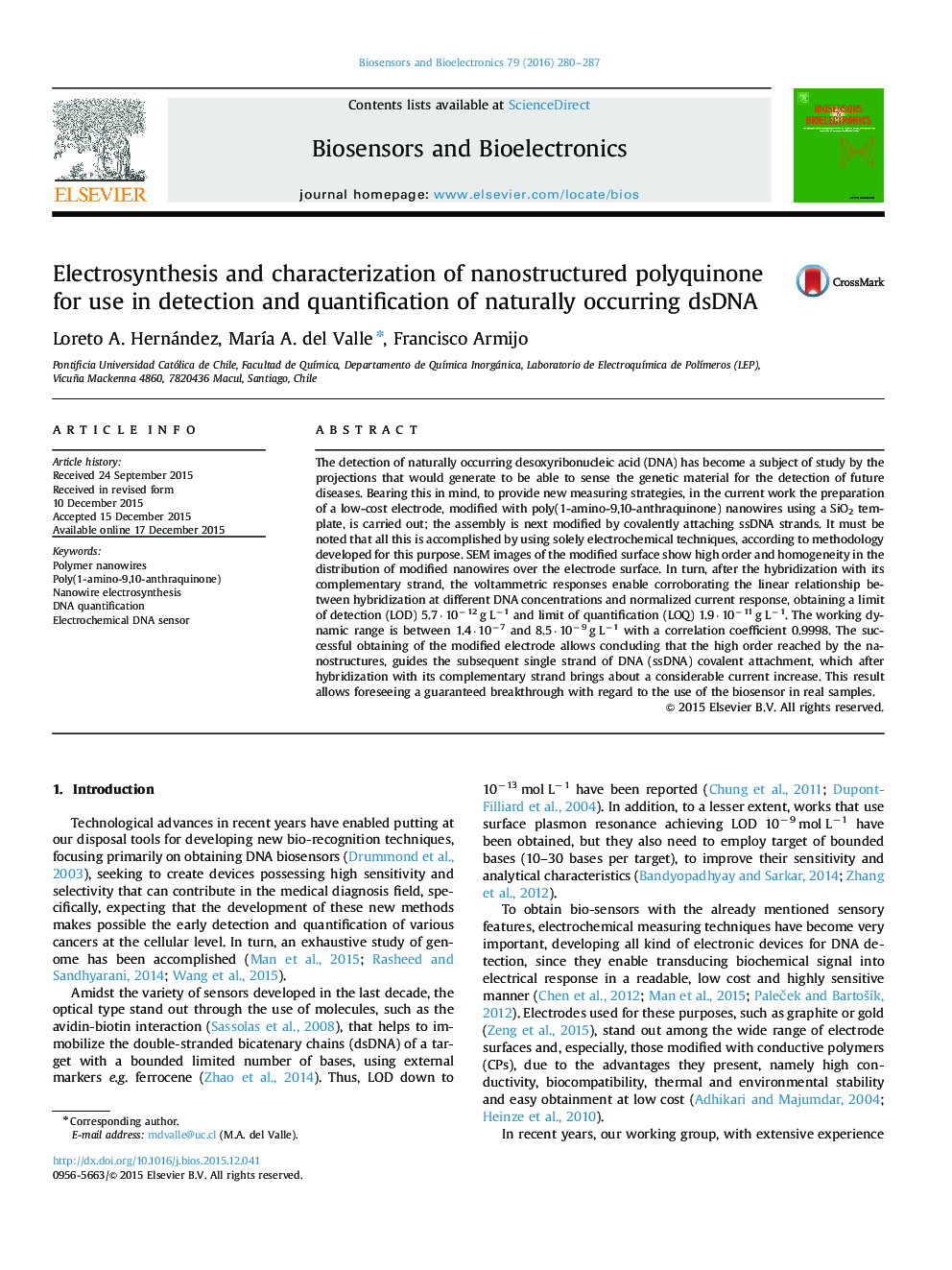| Article ID | Journal | Published Year | Pages | File Type |
|---|---|---|---|---|
| 7230964 | Biosensors and Bioelectronics | 2016 | 8 Pages |
Abstract
The detection of naturally occurring desoxyribonucleic acid (DNA) has become a subject of study by the projections that would generate to be able to sense the genetic material for the detection of future diseases. Bearing this in mind, to provide new measuring strategies, in the current work the preparation of a low-cost electrode, modified with poly(1-amino-9,10-anthraquinone) nanowires using a SiO2 template, is carried out; the assembly is next modified by covalently attaching ssDNA strands. It must be noted that all this is accomplished by using solely electrochemical techniques, according to methodology developed for this purpose. SEM images of the modified surface show high order and homogeneity in the distribution of modified nanowires over the electrode surface. In turn, after the hybridization with its complementary strand, the voltammetric responses enable corroborating the linear relationship between hybridization at different DNA concentrations and normalized current response, obtaining a limit of detection (LOD) 5.7·10â12 g Lâ1 and limit of quantification (LOQ) 1.9·10â11 g Lâ1. The working dynamic range is between 1.4·10â7 and 8.5·10â9 g Lâ1 with a correlation coefficient 0.9998. The successful obtaining of the modified electrode allows concluding that the high order reached by the nanostructures, guides the subsequent single strand of DNA (ssDNA) covalent attachment, which after hybridization with its complementary strand brings about a considerable current increase. This result allows foreseeing a guaranteed breakthrough with regard to the use of the biosensor in real samples.
Related Topics
Physical Sciences and Engineering
Chemistry
Analytical Chemistry
Authors
Loreto A. Hernández, MarÃa A. del Valle, Francisco Armijo,
